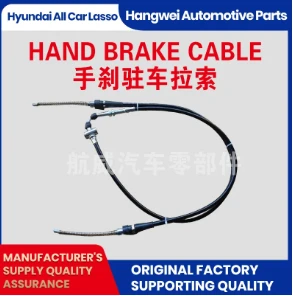Understanding Throttle and Clutch Mechanics in Vehicle Performance and Control
Understanding Throttle and Clutch A Comprehensive Guide for Driving Enthusiasts
Driving is an art form that combines various skills, techniques, and a deep understanding of the vehicle's mechanics. Among the fundamental components that govern the way we operate a car, the throttle and clutch play crucial roles. Both are essential for mastering the dynamic relationship between engine power and drivetrain control, particularly in manual transmission vehicles. In this article, we will explore the intricacies of throttle and clutch, their functions, and how they interact to enhance your driving experience.
The Throttle
The throttle controls the engine's airflow, which directly influences its power output. In modern cars, the throttle is often electronically controlled, but in simpler terms, it acts as the gas pedal. When you press the throttle, you allow more air and fuel to mix in the engine's combustion chamber. This, in turn, increases the engine's revolutions per minute (RPM), resulting in greater power and acceleration.
Understanding how to modulate the throttle is vital for smooth driving. Sudden acceleration can lead to loss of control, especially in slippery conditions. Therefore, learning to apply the throttle gradually and smoothly can make a significant difference in vehicle handling. For example, while driving on a wet road, a gentle press on the throttle can prevent wheel spin, maintaining traction and stability.
The Clutch
The clutch is a mechanical device that engages and disengages the engine from the drivetrain, allowing you to change gears in a manual transmission vehicle. It consists of several components, including the clutch disc, pressure plate, and flywheel. When the clutch pedal is pressed, the clutch disengages the engine from the transmission, allowing the driver to shift gears without damaging the gearbox.
Mastering the clutch is essential for effective gear changes. The challenge lies in coordinating the clutch with the throttle. When starting from a standstill, it's crucial to find the clutch's bite point—where the clutch begins to engage. This is where the engine's RPM needs to be adequately matched with the gear ratio. Too much throttle without engaging the clutch properly can lead to stalling or jerking, while too little throttle may cause the car to bog down.
The Relationship Between Throttle and Clutch
The interaction between throttle and clutch is the cornerstone of driving a manual vehicle smoothly. When starting off, you must use both components in harmony. Press the throttle gradually while releasing the clutch at the bite point, and you'll experience a seamless start. This technique is key to preventing stalling and ensuring that the vehicle accelerates smoothly.
throttle clutch

While driving, the relationship continues. When shifting up, it's important to release the throttle momentarily while depressing the clutch. Once the gear is engaged, you can progressively reapply throttle to continue accelerating. Conversely, when downshifting, blipping the throttle (rev-matching) while disengaging the clutch can help balance the engine RPM with the lower gear, resulting in a smoother transition and preventing disruptive engine braking.
Tips for Mastering Throttle and Clutch Control
1. Practice in a Safe Environment Before hitting the roads, practice in an empty parking lot. Focus solely on balancing throttle and clutch to get a feel for the reaction of your vehicle at various speeds.
2. Time Your Movements The key to smooth driving is timing. Learn the rhythm of pressing and releasing the clutch and throttle to ensure a fluid motion.
3. Pay Attention to Engine Sounds The engine provides valuable feedback. Listen for changes in RPM and sound, and use this information to gauge when to shift or apply more throttle.
4. Be Mindful of Road Conditions Adjust your throttle and clutch technique based on the road surface. Slippery or uneven terrain requires more finesse, so adapt your approach accordingly.
5. Stay Calm and Collected The interplay between throttle and clutch can be intimidating for new drivers. Take a deep breath and maintain focus; over time, it will become second nature.
Conclusion
The throttle and clutch are fundamental to mastering manual driving. By understanding their functions and how they interact, drivers can improve their skills and enhance their overall experience behind the wheel. Whether you are an experienced driver or a novice, focusing on the delicate dance between these two components will lead to smoother gear changes, better control, and an increased enjoyment of the driving experience. So buckle up, and embrace the thrilling journey of mastering throttle and clutch control!
-
Workings of Clutch Pipe and Hose SystemsNewsJun.04,2025
-
The Inner Workings of Hand Brake Cable SystemsNewsJun.04,2025
-
The Secrets of Throttle and Accelerator CablesNewsJun.04,2025
-
The Hidden Lifeline of Your Transmission Gear Shift CablesNewsJun.04,2025
-
Demystifying Gear Cables and Shift LinkagesNewsJun.04,2025
-
Decoding Clutch Line Systems A Comprehensive GuideNewsJun.04,2025
